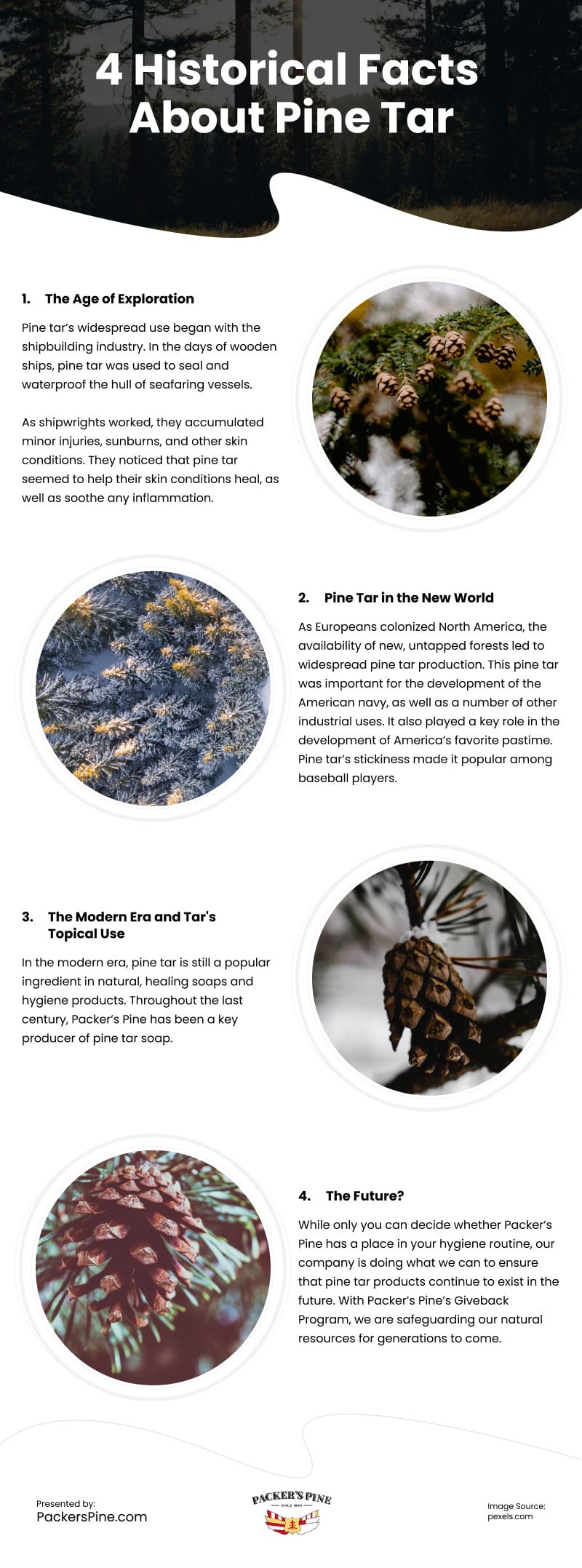
Packer’s Pine has long been a leading authority in the world of pine tar, with over a century of expertise in this unique field. However, while our legacy is impressive, it’s just a small chapter in the extensive history of pine tar. Join us on a historical adventure through time on our enigmatic contraption.
The Age of Exploration
In the annals of history, pine tar has been a valuable resource since the dawn of humanity. Its applications have evolved over time, from its early recognition in the ancient world for its medicinal properties, as documented by ancient physicians like Hippocrates and Galen.
However, it was in the shipbuilding industry during the age of wooden vessels that pine tar truly began to shine. Used to seal and waterproof ship hulls, pine tar became indispensable for seafaring nations, especially in regions with abundant pine forests like Scandinavia. Shipwrights soon noticed its potential beyond shipbuilding, using it to treat minor injuries, sunburn, and skin conditions. Pine tar found its way into homemade soaps and salves, gaining a reputation as a natural and effective healing ingredient.
Pine Tar in the New World
The colonization of North America brought about a surge in pine tar production, particularly in states like North Carolina, earning it the nickname “Tar Heel” state. Pine tar played a pivotal role in the development of the American navy and found a unique place in the world of sports. Baseball players embraced its stickiness to enhance their grip on wooden bats, resulting in better hits and a competitive edge that endures to this day.
The Modern Era and Tar’s Topical Use
In contemporary times, pine tar continues to be a favored ingredient in natural healing soaps and hygiene products. Packer’s Pine, a key producer of pine tar soap for over a century, has made its mark, even gracing the halls of the Smithsonian Museum.
Modern pine tar products undergo purification to remove impurities, ensuring their safety for human use. These products are widely employed to treat various skin conditions, including eczema, psoriasis, and rashes. Unlike medieval shipbuilders, who discovered pine tar’s benefits through trial and error, modern science offers well-researched evidence of its dermatological advantages. Pine tar aids in suppressing inflammation, returning skin to its natural state, and providing antibacterial protection, all supported by scientific research.
The Future?
Packer’s Pine is dedicated to preserving pine tar products for future generations through its Giveback Program, safeguarding natural resources. Their biodegradable soap is ideal for outdoor use and contributes to reforestation efforts. The company supports the National Forest Foundation, which aims to plant 50 million new trees across the United States by 2025. This reforestation not only ensures a sustainable source of pine tar but also promotes environmental well-being. Packer’s Pine also partners with One Tree Planted, a global organization focused on reforestation and forest preservation.
In conclusion, pine tar has stood the test of time, offering myriad benefits to our skin and industries. Whether you choose to incorporate Packer’s Pine into your hygiene routine or not, the company’s commitment to preserving forests and natural resources ensures that pine tar’s legacy endures. Who knows, the bar of Packer’s Pine you use today might become a part of history, on display for future generations to admire.
source: https://www.packerspine.com/blogs/news/the-history-of-pine-tar
Comments
Download this infographic.
